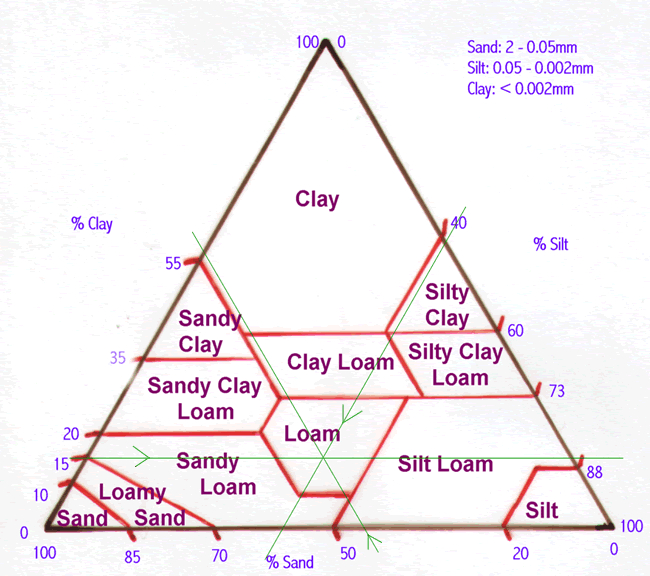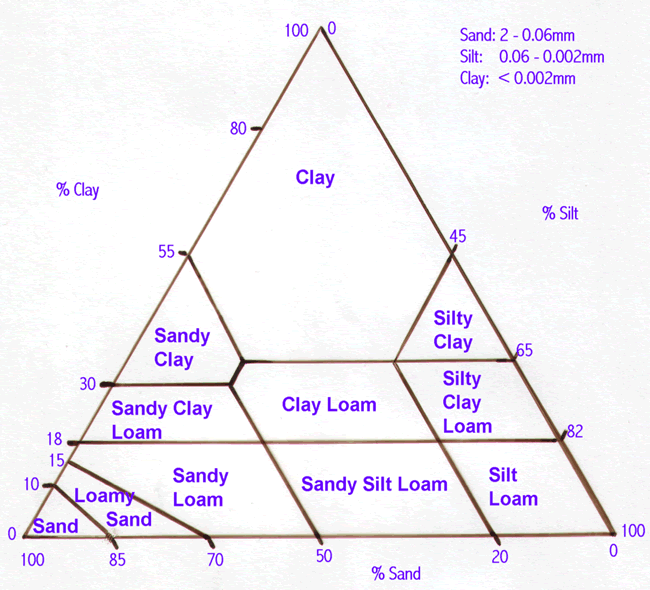This describes the relationship between the sand, silt and clay particles that make up the soil. The different proportions of these particles within a soil will determine whether the soil is for example a sandy loam, silty loam or any of the other textural classes which describe a soil.
Following a soil particle analysis, soil textural triangles can be used to determine the texture of the soil.
The two commonest ones are that for the USDA (which has 12 soil texture classes) and SSEW (which has 11 soil texture classes).
USDA textural triangle

When determining the textural class, the following procedure is carried out:
- Determine the percentage of Sand and draw a line that is parallel with the base line for silt.
- Determine the percentage of Silt and draw a line that is parallel with the base line for clay.
- Determine the percentage of Clay and draw a line that is parallel with the base line for sand.
- Where the lines intersect provides the description of the soil texture that has been assessed.
In the example given on the USDA textural triangle there is a soil with 43% sand, 42% silt and 15% clay: This is a Loam.
SSEW textural triangle

The same procedure to that given for the USDA textural triangle is used to determine soil texture.
